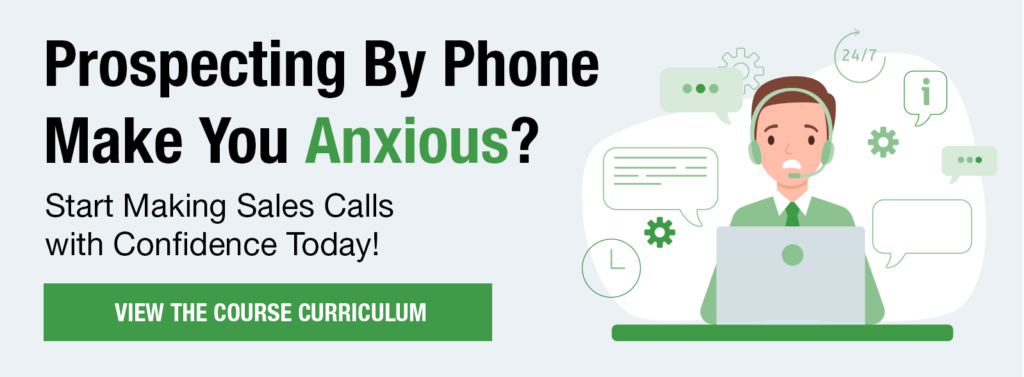What’s The Best Inside Sales Cadence?

What’s The Best Inside Sales Cadence?
The best inside sales cadence is a simple one. It starts with first building your core lead list with prospects that match your ideal customer profile (ICP).
In 2002, I started a new sales position at duPont REGISTRY, selling online marketing solutions to high-end auto-dealers. I was very experienced in phone sales and known as a strong closer – so I naturally wanted to get the initial “product knowledge” training out of the way as fast as possible and then hit the phones.
I started on a Monday, and by Noon, I was done with the company training (it wasn’t complicated – call auto dealers and close them on listing their inventory on our website) and wanted to start making sales calls ASAP.
My sales manager had other ideas – he told me not to make a single sales call this week. I was confused. He said he wanted me to take the entire week first to build my lead list.
The initial strategy I was planning to grab all the old “orphan” leads in the system – easy peasy – should take 60-seconds to grab a bunch of leads no one is working and move it into my name.
That wasn’t going to work for him, and he proceeded to enlighten me to one of the essential sales survival techniques a rep could ever learn: How to prospect.
He wanted me to build a lead list of highly probable targets before making a single sales call.
So, how do you do that? This is where he taught me the simplest solution; I was embarrassed for not realizing this already. And I find most salespeople would benefit from going back to basics, but I digress.
He taught me the key to success prospecting: Knowing what to look for.
He grabbed last month’s issue of duPontREGISTRY’s car magazine and started flipping through each page – one by one and said, “Tag all the dealers/companies doing full-page and double-page ads in the magazine. These are the companies that already know the value of marketing and have the budgets to do so. You won’t have to try and convince them they need to advertise; you’ll only need to sell them on advertising with you in the online division.”
He then said, “See all these half-page and quarter size page ads? Ignore them. They either have too low inventory, too small of a budget or just testing the waters – stay away from them. They will require 10X more work and will generate 10X less revenue.”
My eyes were WIDE open. Two things this taught me:
- There are KPI’s (Key Prospecting Indicators) that every business has for their ICP
- One of those KPIs, in this case, was the prospect’s “inventory” – if they had less than 15 high-end cars on the market, they were not “qualified.” How many times have you spent way too much time with a prospect that was not qualified? This was a valuable metric and lesson. (Previous to starting at duPont REGISTRY, I was a cold calling and closing machine. I just grabbed leads and went to town. Now, I learned how to be a sniper)
Now that I was enlightened on how to prospect and fill my lead list with orphaned accounts that matched our ICP, he wanted me to take the entire week to build the list with quality prospects.
I had other plans. I wanted this list built as fast as possible, so I worked feverishly, following the guidelines he taught me on how to prospect and find highly probable “suspects.”
By Wednesday, I had to wait for him to go to lunch, and as soon as he left the building, I hit the phones. I wasn’t waiting a whole week to start selling. By the time he got back from lunch, I had two 12-month deals/contracts on his desk. I closed the first and third sales calls I made. One call closes. (My second call went to voicemail, but I eventually sold them too)
Using my tried and true “sales process” combined with my newfound prospecting skill was a winning combination.
How Many Sales Leads Should a Rep Have?
I’ve answered this question in the past.
I want to say – and it was a long time ago that I was asked to build a list of up to 500. I’ve spoken with my previous sales manager (we’ve become great friends) and he seems to remember a number between 200 and 400.
How Many Sales Calls Per Day?
This too, I’ve answered in the past, and its something I’ve learned from my ex-sales manager:
The magic formula is 60 Dials per day and or 3 Hours of talk time.
So, what’s the best sales cadence?
With all the new sales solutions available, sometimes old-school sales techniques and processes get the best results.
At duPont REGISTRY, we had a rule that once you took ownership of a lead, you had 60-days to “move the needle.” This did not mean you had to close the sale within 60-days, but you had to have some progress to avoid having another sales rep take that account over.
So, with that added motivation, here is how that cadence went… for this example, we will assume we have a targeted lead list of 250 leads.
The process worked like this:
- The goal was to have at least 60-dials per day and or 3-hours of talk time.
- We would start calling the list one call after another.
- If we got the prospect on the phone, they were moved to a different “bucket” for outreach and had a FOLLOW-UP task scheduled. So think of it this way – You have a lead list marked MQL’s as an example (You could also label it SAL’s for Sales Accepted Lead – Your call). When we got a prospect on the phone, if they didn’t buy or die on that call, a follow-up call was scheduled, and they were moved out of the MQL (or SAL) lead Bucket and moved to the WORKING bucket.
- For the MQL/SAL leads that were called the first time, if we did not get the prospect on the phone, we either left a message with the gatekeeper and or left a voicemail and sent an email (you can learn specific sales techniques in this free online sales course preview on how to leave a voicemail that gets callbacks)
- Once we left a voicemail and sent an email or left a message with the gatekeeper, we would move that lead from the MQL/SAL bucket to the FTC#2+ Bucket.
- FTC#2+ Bucket are leads that have had a FIRST TIME CALL, and we left a message/VM and or email. Why is it called the FTC#2+ Bucket? Because after we called the prospect once, this is the list we use to “cycle through” leads that we have already left a VM/email or message with the gatekeeper. So now, with these leads, it’s dial, dial, dial. I’m not a fan of leaving a VM or sending an email every time I call. It can slow you down. So the idea is: Call the first time, leave voicemail/email and then move to the next Bucket to be cycled through.
So look at it this way:
- You start with 250 pre-qualified “suspects” (Prospects that match your ICP)
- You hit the phones on day 1 of calling.
- Calls that connect with the prospect either go to the: Working, Not Qualified/Not Interested (Archived) or Converted Lead Stage/ Bucket.
- Calls that go to VM/EMAIL and or Gatekeeper get moved to the FTC#2+ Lead Stage (Bucket)
- As you progress through your MQL/SAL list, it will start to “shrink” as you have some prospects move to FTC#2+, Working, Archived, or Converted. So if you started with 250 leads, at the end of the day, your lead buckets might look like this: MQL/SAL: 190; FTC#2+: 50; Working: 5; ARCHIVED: 4; Converted: 1
- In the morning, you want to get in early before its time to hit the phones and prospect to replace the ten leads (5 Working, 4 Archived, and 1 Converted)
- Once that is done, and it’s time to hit the phones, pick up where you left off on the SAL leads (190 + the ten you added)
- Try to get at least 40-dials before Noon on your SAL lead bucket.
- After lunch, cycle through your FTC#2+ Bucket. Make as many calls as you can.
- It helps to have “call blocks,” so you might say, “From 1 till 3 pm you are calling only the leads in the FTC#2+ bucket,” and from 3 pm on, you are calling the “tasks” you have for the leads in the “working” category, etc.
I know the “popular” thing to do is to have a sales cadence following a “call day 1, email day 3, send a linked in invite day five, etc.,” and sales enablement software solutions have created a billion-dollar industry for that.
You have to put in the work. “Selling” is never going to be easy, so you have to constantly improve your sales skills and have the required output to reach your monthly quota. Skill + Output Equals Results. And following a simple sales cadence plan like the above has never let me down.
– Michael Pedone
Michael Pedone is the founder of SalesBuzz.com – a turnkey on-demand skills-building program for inside sales teams. Try a free class today.

ELIMINATE CALL RELUCTANCE
- How to Warm Up and Close Cold Leads
- Eliminate “No, Thanks,” “Not Interested,” & “We’re All Set” Responses
- Neutralize Gatekeepers & Get Voicemails Returned
- Ask Engaging Questions Instead of Probing
- Improve your Qualifying Skills
- Give Stellar Presentations & Handle Objections
- Close Follow-up Calls and Get Targeted Referrals
- How to Set & Achieve Your Toughest Sales Goals
- Improve Your Time Management Skills
